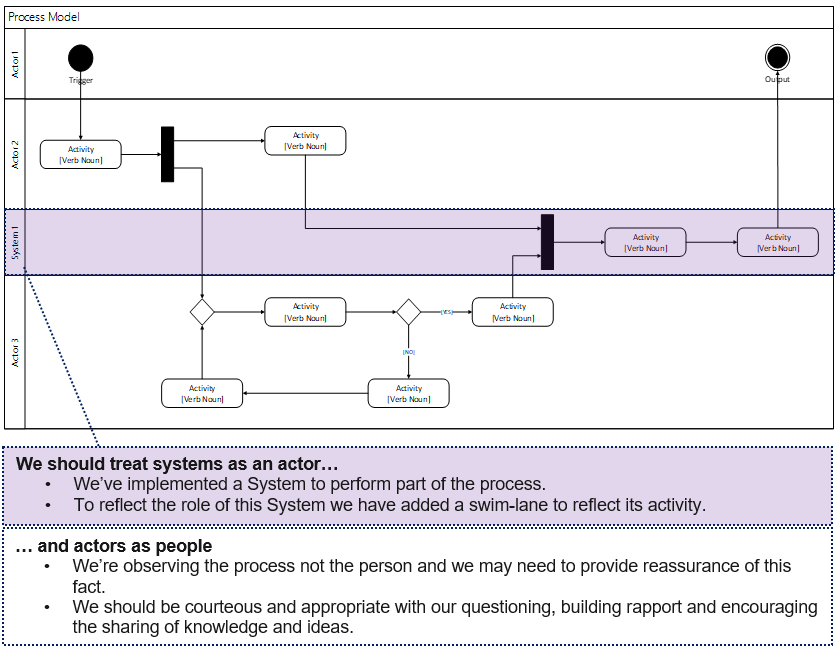Process Modelling Tips
The classic strategy
- Understand the process through observation …
- … and by talking to those conducting the process.
- Read existing and previous process documentation.
- Ask LOTS of questions.
Gain different perspectives
- Wherever possible we should observe the process performed by several people.
- There may be variation in how different people perform the process.
- Each person may have specific ideas as to how the process could be improved.
We shouldn’t make assumptions
- We should watch how the process is played out by those performing it.
- We shouldn’t assume we know how the process works or what is going on just by talking to someone or reading a document.
- If any assumptions are made then we should ensure that this is made clear to our audience.
- When observing we should try and spot tacit activity, and ask why and how the actors do what they do to further our understanding of the process.

We should think carefully about lane order
- Swim lanes are great for showing the activity of each actor, but we need to think carefully about the order in which to display them
- We should arrange the lanes to help to make the model easily understandable for our audience.
- Generally the customer (or instigator) of the process is in the top lane but after that the lane order is up to us.
- The diagram on the right shows the same detail as the one above. The process illustrated on this page gives the impression of being more confusing because the lane order has been drawn differently.
Continuity
- We should ensure there are no breaks in our process model, it should flow seamlessly from start to finish.
- An easy mistake to make is to omit the criteria following decisions; our flow arrows must be labelled (e.g. yes or no) following a diamond to indicate the conditions of that route.
Model making can be a communal activity
- By gathering some of our process experts in a room together with a blank wall and some post it notes we can work with them to facilitate the creation of the process model.
- This is a great way of creating a shared understanding of the process and provides us with a model to test against the live process for accuracy and gaps.
Be consistent with the level of detail
- It is good practice to clarify the level we are working at, and the amount of detail which is required to avoid falling into the trap of mixing levels of granularity and/or going into too much, or to little detail on our map/model.
- We may find we need to ask more questions of those operating at too high a level, and ask those in the detail to bring their input up a level or two.
